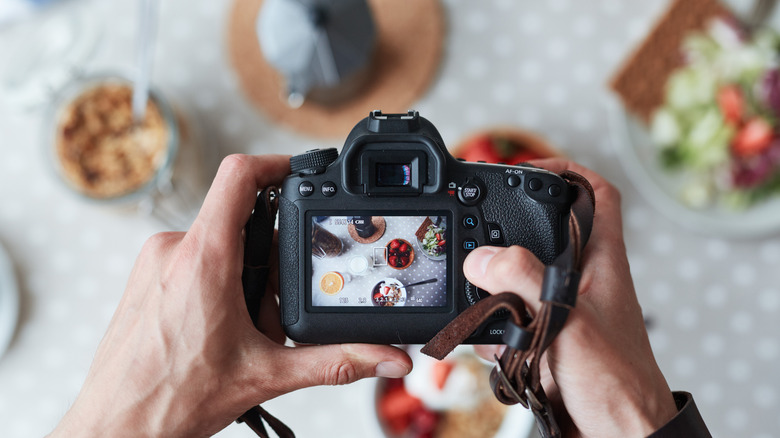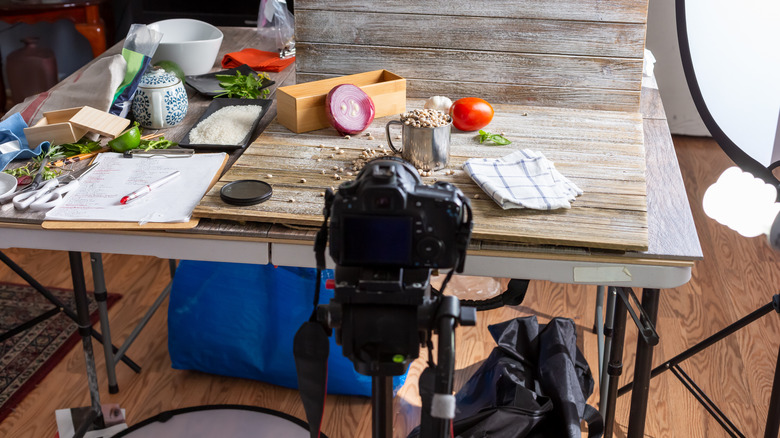Here's Why Food Commercials Look So Different Now
Almost everyone remembers those old food commercials from their childhood. The fuzzy warm glow of the hulking television screen displaying scenes of juicy, picture-perfect Big Macs (via YouTube) and crispy, golden KFC (also on YouTube) accompanied by a bubblegum pop jingle that played over smiling families, hungry teenagers, and colorful cartoon mascots. There was something so tempting about those smiling, happy families, something about the warmth and familiarity of those wood-paneled dining rooms or the flair of neon geometric patterns (also known as Memphis-Milano style, via The Design Museum) and the sight of hot food that made you want to hurry out and swing by your local Taco Bell.
As anyone can tell you, however, those flashy commercials aren't always in the business of telling the truth, and you may find reality to be a bit less impressive than what you saw just minutes ago. Of course, those stylized commercials are designed to make the product look good — that's just good business, after all — but it would seem that people are growing discontented with reality: getting a squished, flat burger instead of the tall, juicy pound of Angus they saw on TV. According to Shellie Anderson, a food stylist for clients such as Burger King and Ragu, commercials are quickly changing to answer the age-old question: "Where's the beef?"
Realism takes center stage
In an interview with Mental Floss, Anderson gives the simple answer as to what food commercials are now trying to focus on: realism. Almost contrary to the nature of a commercial with all its Hollywood flair, the modern food commercial will present "real food," as in food that doesn't look perfect; a bit messy, a bit less glossy, and a bit more greasy. The change comes not just from trying to appeal to the consumer, but also due to the production equipment itself. A high-definition lens can show off the plasticity and incriminating details of fake food props, making it much more obvious they aren't the real deal.
"People are tired of seeing something in a TV commercial and then ordering it in a restaurant and it doesn't look the same," says Anderson. "You don't want it to look staged anymore. You want a burger to look like the cheese naturally dripped off and landed on the plate."
While the use of "fake food" has been a part of the food stylist career for many years, with tricks ranging from instant mashed potatoes in fake milkshakes, Vaseline on margaritas, and even using varnish to make a roast chicken look golden brown (via Love Food), using real food is not unheard of. Chris Oliver, a food stylist for "Seinfeld," "Gone Girl," and "Big Little Lies," claims that she only deals in "real food." Fortunately, the food used on set is said to never go to waste.

